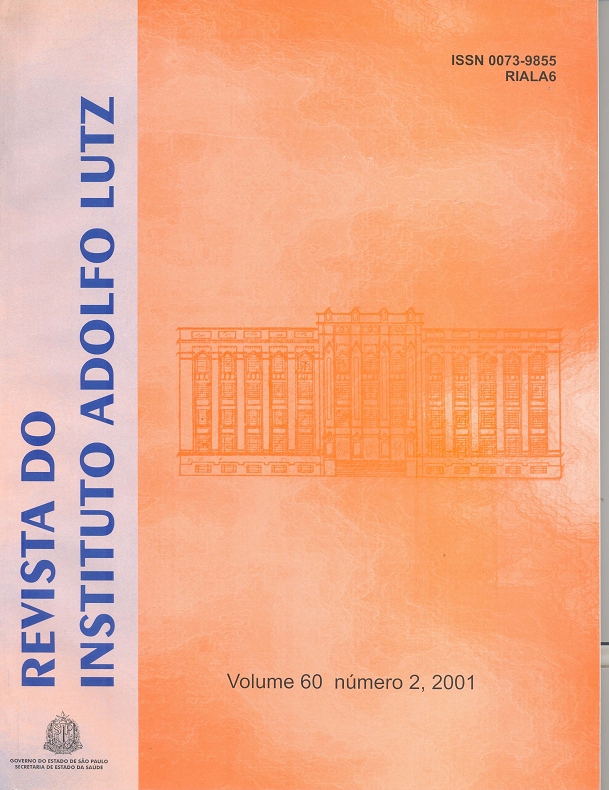Abstract
Mushrooms are well-liked food whose consumption has increased substantially. To extend its shelf life the addition of sulphur dioxide is necessary as it acts as a bleaching and preservative agent. Resolution 04/88 from the Brazilian Health Ministry National Commission of Rules and Standards for Foods allows the maximum of 50 mg/kg of sulphur dioxide. The absence of Salmonella in 25 gram samples and a maximum of 200 fecal coliforms per gram is also required in the Resolution 12/78 from the Brazilian Health Ministry National Commission of Rules and Standards for Foods. A total of 108 samples, 25 from stores and markets, 36 from mushroom producers and 47 imported lots from China were analysed for sulphite and pH levels, and were submitted to microbiological examination. The Monier-William method was used and its detection limit was 0.15 mg/kg and recovery of 91%. Levels of suphur dioxide varied from not detected to 1052 mg/kg. The samples showed levels above those permitted, from retailers, producers and imported lots, at 68, 61 and 23%, respectively. The pH levels varied from 2.60 to 5.35. All mushroom samples were acceptable in accordance with microbiological standards. The high levels of sulphur dioxide found are of concern to public health. The microbiological results show that low levels of sulphur dioxide are sufficient to preserve this product, not justifying the levels found.
References
2. Beelman, R.B.; Barden, C.L.; Edwards, C.G. Total sulfur dioxide residuais in fresh mushrooms washed in sulfite solutions. J. Food Prot. 51(11):903-5, 1988.
3. Behre, L.M. Sulfite food additives: to ban or not to ban? Dairy Food Sanit., 6(9):386-90, 1986.
4. Brasil. Leis, decretos,... Resolução 04/88 do Conselho Nacional de Saúde (CNS). Diário Oficial da União, Brasília, 10 de janeiro de 1988, seção I, p.24716-24723. Resolução 12/78 da Comissão Nacional de Normas e Padrões para Alimentos (CNNPA). Diário Oficial da União, Brasília, 24 de julho de 1978. Seção I, p.11499-11527. Resolução RDC 12/01 da Agência Nacional de Vigilância Sanitária (ANVISA). Diário Oficial da União, Brasília, 02 de janeiro de 2001. Seção 1, p.45-53.
5. Daniels, et al. Survey of sulphites determined in a variety of foods by the opttnized Monier-Willians method. Food Addit. Contam., 9(3):283-9, 1992.
6. Fazio, T.; Warner, C.R. A review of sulphites in foods: analytical methodology and reported findings. Food Addit. Contam., 7(4):43354, 1990.
7. FDA. Food and Drug Administration. Food labeling; declaration of sulfiting agents, final rule. Federal Register, 51, 25012-25020, 1986.
8. FASEB. The reexamination of GRAS status of sulfiting agents, Report prepared for Center for Food Safaty and Applied Nutrition, FDA. Federation of American Societies for Experimental Bilogy, 1985.
9. Instituto Adolfo Lutz. Normas Analíticas do Instituto Adolfo Lutz. 3ed. São Paulo, 1985, 533p.
10. JECFA. Joint Fao/Who Expert Committee On Food Additives. Evaluation of certain food additives and contaminants. 27th Report. Geneva, WHO, 1983, p.20-21. (Technical Report Series 696).
11. Perfetti, G.A.; Joe Jr., F.L.; Diachenko, G.W. Liquid chromatographic determination of sulfite in grapes and selected grape products. J. Assoc. Of. Anal. Chem., 72(6):903-906, 1989.
12. Shipton, J. Estimation of sulphur dioxide in dried foods. Food Preservation Quarterly, 14:54-6, 1954.
13. Vanderzant, C.; Splittstoesser, D.F. Compendium of Methods for the Microbiological Examination of Foods, 3ed. Washington: Americam Public Health Association, 1992, 1219p.
14. Warner, C.R. et al. T. Reevaluation of Monier-Williams method for determining sulfite in food. J. Assoc. Of. Anal. Chem., 69(1):3-5, 1986.
15. Yabiku, H.Y. et al. O. Níveis de conservadores intencionais em sucos naturais de frutas comercializadas no Brasil. Rev. Inst. Adolfo Lutz, 47(1/2):64-75, 1987.

This work is licensed under a Creative Commons Attribution 4.0 International License.
Copyright (c) 2001 Neura Bragagnolo, Cláudia A. Silva, Marta H. Taniwaki
